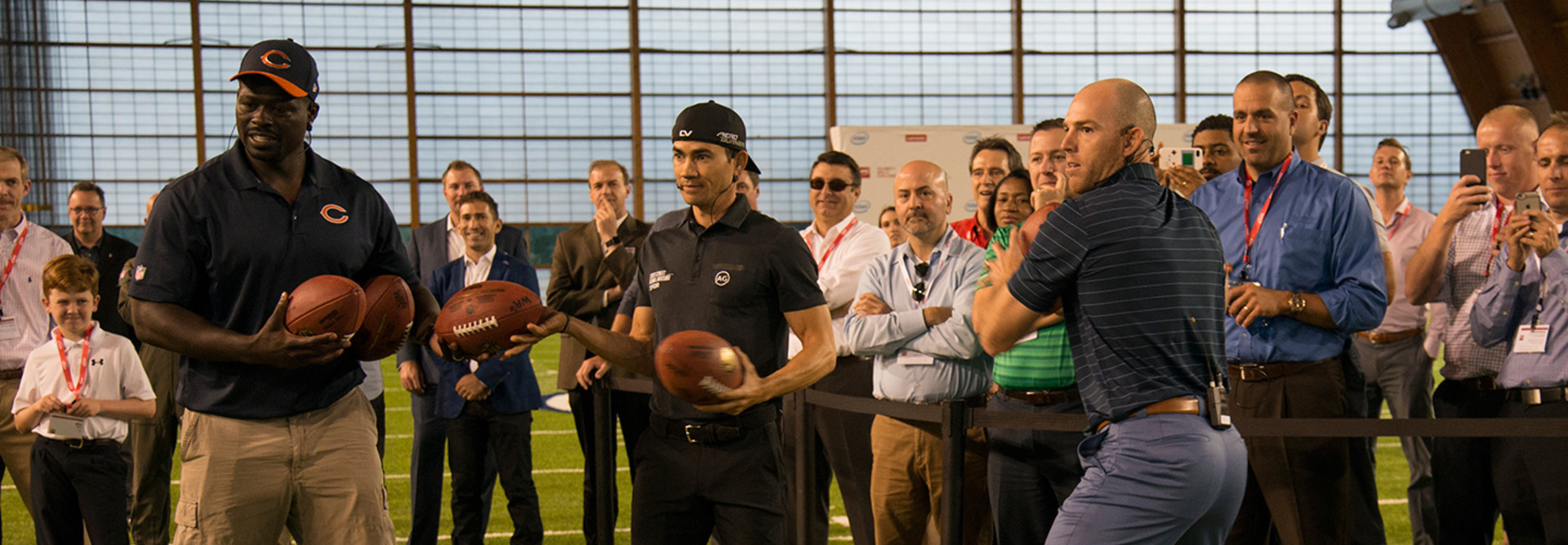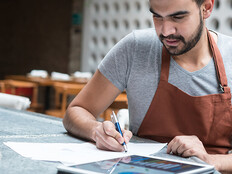Professional Athletes’ Must-Have Tech: FaceTime, Data Analytics and Mobile Devices
When you ask a professional football player what piece of technology he can’t do without, you might expect him to talk about a FitBit or some app that provides intricate details on his athletic performance.
But Chicago Bears kicker Robbie Gould’s must-have tech is his iPhone — and it’s not because of the NFL app, either. It’s because of one feature: FaceTime.
“FaceTime is one of the greatest inventions ever, because I can talk to my kids face-to-face as opposed to being able to talk them by [only] a voice call,” Gould said.
Gould was one of four athletes participating in CDW’s Celebrity Skills Challenge on Sept 15. The charity event, in which four athletes competed in a series of sports challenges, was held at the Chicago Bears’ Walter Payton Center. PGA Tour player Gary Woodland, who also participated, echoed Gould’s affection for the iPhone’s built-in video conferencing feature.
“It’s unbelievable to think that we can be sitting here on our cellphones anywhere I am in the world, and I can FaceTime with somebody,” Woodland said. “When I travel internationally, I FaceTime with my parents back home just to get that face-to-face interaction, which is so much nicer than just talking on the cellphone.”
Welcome to the Data Games
For both professional golf and football, data analytics is playing an increasingly important role.
On the golf side, players have access to a plethora of data, thanks to the PGA Tour’s ShotLink System, which is powered by CDW.
“From the statistics standpoint, we’re so adapted to where we’re at right now with our ShotLink and our stats that we get on a daily basis [that] it’s hard to ever go back to how we had it when I was growing up,” Woodland said.
The main things that analytics provide to PGA Tour players are the visibility and insights to pinpoint weaknesses so coaches and players can improve where they need to the most.
“The game of golf has a million different stats, and CDW does an unbelievable job with the platform, providing that technology to us,” said PGA Tour player Camilo Villegas, who also participated in the event. “Actually, I just sat down with my instructor and the guy who runs the stats software just to see what we’re gonna do. How we’re gonna practice. Where do we need to get better.”
On the football side, the NFL has invested heavily in improving and expanding tracking and analytics. This season, it went live with its Internet of Things solution, which includes embedded chips in players’ shoulder pads, providing the league with data insights on a level it's never seen before.
“[Analytics] gives you the ability to understand when to back off and when to push through maybe at difficult times. That feedback later in the season is great,” Gould said.
Of course, some players see a downside to that detailed level of tracking.
“Putting these sensors in can somewhat be detrimental to some players, but it also can be advantageous to some players too,” Gould said. “Obviously, as you get older, you have more hits on you and people do understand that. But now you can kind of see what an athlete has been through, whereas before, you could kind of hide some of it.”
While speaking to Golf Channel broadcaster Steve Sands during a Q&A at the event, former Chicago Bears defensive end Alex Brown attempted to describe the toll that playing professional football can have on players’ bodies.
“You don’t really wanna know what we have to put ourselves through,” he said. “Bryant McKinnie is 6 foot 8, 360 pounds. So he’s a big man, and after going against him for 60 plays, honestly, you feel like crap.”
By increasing its investments in player-tracking technology, the league hopes to help quantify and understand the true toll of 60 plays against players like McKinnie in more specific terms than feeling like “crap,” to hopefully prevent injuries and improve player safety.
The Tablet as a Training Tool
While smartphones got rave reviews from Villegas and Woodland, the tablet has proved to be an invaluable training tool for Gould.
The NFL uses Surface Tablets on the sidelines as part of its deal with Microsoft, but some teams use other tablets for training and personal time. Gould loves his iPad and says it’s given him the freedom to review training footage on his own terms.
“I [like] having the ability to not be in a facility to watch film [but to be] able to go home, spend time with your family and watch [film] when the kids go to bed,” he said.
When people look back on classic football movies and TV shows, scenes of players in a dark room huddled around a projector might come to mind. But the tablet, which many teams are now using as a digital playbook, allows players to review that footage when they want and as many times as they want.
In this way, technology is improving not only athletes’ professional lives, but also their personal lives.
“Sports are demanding. Whether it’s time or physical, the consumption of energy that you put into your sport and your activity to be really, really good at it — there are certain technologies that have helped us as the athlete [to] be able to balance a family life with playing a sport,” Gould said.









